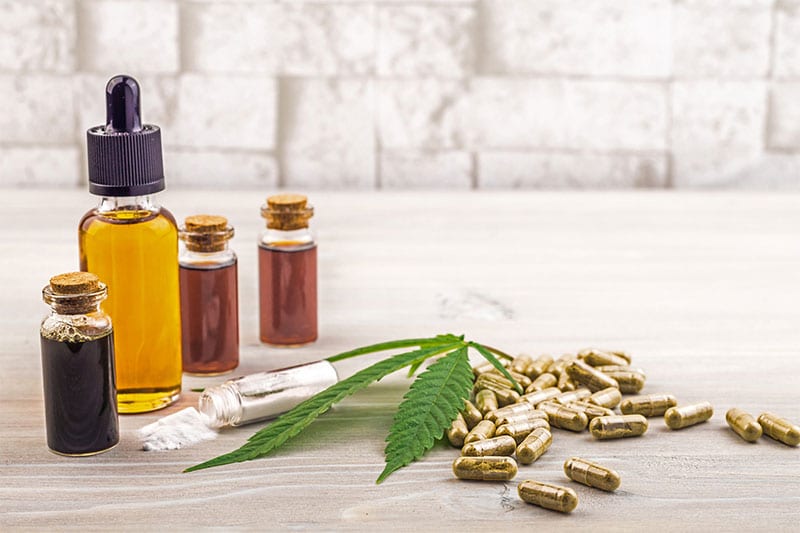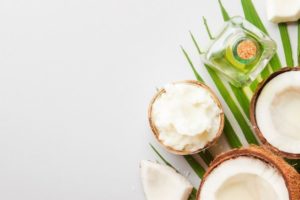What does CBD oil taste like? Not olives, that’s for sure! With people becoming more and more open to medicinal marijuana and trying out new products, the stigma surrounding Cannabis has faded away over time. Do you want to explore the goodness of CBD oil for the first time but are worried about the taste? Already a CBD oil enthusiast and looking for ways to enhance its flavor? Well, you are not alone.
Less than 0.3% THC is the way to go!
With America legalizing CBD oil containing less than 0.3% THC, more people are becoming keen on reaping the benefits of this product. You might love what CBD oil can do for you but not like the taste. Don’t worry! It doesn’t end here.
The strong taste associated with CBD products is a reminder of its natural health benefits. Different types of CBD oil can taste differently based on manufacturing procedures and consumption methods.
If you are new to the Cannabis community and not sure what to expect when trying out CBD oil, then you have come to the right place. This guide entails anything and everything to do with the taste of CBD oil and how you can enhance it for a better experience. In the end, we also have something for the people who are not fond of its earthy taste.
What exactly is CBD oil anyway?
Cannabidiol or CBD is one of the many active ingredients called cannabinoids found in the cannabis plant. It is known for its therapeutic properties without providing the psychoactive effects associated with its counterpart, THC.
CBD oil is manufactured by extracting cannabidiol and diluting it with certain carrier oils, including olive oil, coconut oil, or hemp oil. Adding a carrier oil to the product increases the absorption of CBD in the body. Furthermore, CBD oil can be administered orally or sublingually (placing it under the tongue for 60 seconds).
Carrier oils can strongly influence the taste of the final product. However, pure and unfiltered CBD oil, after immediate extraction from the cannabis plant, can have an earthy, nutty, or grass-like taste. The taste can vary subjectively to individual experience. While some people find the taste of CBD oil unbearable, others say that prolonged use gets you accustomed to it.
CBD Oil – the different types
Before forming any opinion on the taste of CBD Oil, you need to be sure about what type you are consuming and how each can affect the taste. Primarily, there are three types, which include:
- Isolated CBD Oil – As the name suggests, this variant is exclusive to CBD only. Isolate CBD Oils are tasteless since they do not contain a mixture of various other compounds that can give it an earthy flavor.
- Broad-spectrum CBD Oil – With the THC content removed, Broad Spectrum CBD oil contains all the cannabinoids and terpenes usually associated with full-spectrum CBD oil. However, the removal of THC can contribute to a different taste.
- Full-spectrum CBD Oil – This is the complete package for people wanting to try CBD oil. Full-spectrum CBD oil contains a mixture of several cannabinoids, terpenes, and flavonoids typically found in the Cannabis plant. With a strong taste, full-spectrum CBD oil contains trace-quantity of THC (less than 0.3%), so people who are not comfortable with its psychoactive properties should opt for broad-spectrum or isolated variants.
How does CBD Oil affect the taste buds?
If you have ever tried different brands of CBD Oil, you might have noticed that each has its very own aroma and taste. Many factors can contribute to the taste of CBD Oil, and the right combination of these factors can help you take your experience to a whole new level.
Tasty Terpenes – the phytonutrient goodies
The smell of cannabis plants can vary from sweet-smelling strains to more citrusy or spicy versions. Newbies might assume that THC – the psychoactive cannabinoid is what causes this difference in odor. However, we beg to differ. THC, as a cannabinoid, does not have a unique taste or smell.
Nevertheless, what adds to this distinctive flavor of each cannabis strain are aromatic compounds known as terpenes. Phytonutrients produced in the same glands as cannabinoids, terpenes are known to have several health benefits, including stress relief, pain relief, and relaxing effects. There are several terpenes present in cannabis plants, each with its specific aroma. The quantity and type of terpene present in the cannabis strain decide the unique taste of your CBD Oil.
Chlorophyll – the Less, the Better
Terpenes are not alone in this boat. Chlorophyll – responsible for photosynthesis in plants, also contributes to taste. Green in color, and with a bitter taste, you would want to steer clear of extraction methods that leave chlorophyll behind. Furthermore, the presence of chlorophyll in CBD Oil can also suggest the use of substandard extraction methods.
All in all, if you want better tasting CBD Oil, you need to look for products with a lighter color. Darker CBD oils have more chlorophyll content in them and have a more bitter taste you might not like.
Carrier Oils and their effect
Does CBD Oil taste like olive oil? I would not be too keen on this idea since olive oil does not have a similar earthy aroma that CBD hemp oil has on its own. Still, once combined, the carrier oil used can alter the taste of the final product.
Some commonly used carrier oils include:
- MCT Oil – This specific oil has little to no taste or smell and is perfect for people looking to enjoy the original taste of CBD oil.
- Coconut Oil – Perfectly refined coconut oil remains tasteless, and when combined with CBD hemp oil, helps retain its earthy aroma.
- Olive Oil – Several brands are combining CBD hemp oil with extra-virgin olive oil. Although using olive oil as a carrier can greatly increase the smoothness of the product, the strong earthy aroma of terpenes affects the olive oil flavor, making it less palatable.
Extraction methods
The right extraction method can do wonders for the taste of your CBD Oil. Some techniques can leave behind bitter compounds such as plant waxes and chlorophyll. Look for methods that filter these out and provide you with an overall better taste.
If there are so many factors that influence taste, How will I know what pure CBD Oil should taste like?
I am genuinely very enthusiastic about CBD, THC, and marijuana in general. Speaking from individual experience, CBD Oil should feel fresh and alluring, like nature itself. As you use it for a longer period of time, the taste eventually grows on you. I have gotten used to the taste so much that I drizzle it over my favorite salads, pasta, fish etc.
The taste of CBD Oil should be earthy, with small hints of nuttiness (similar to how a walnut would taste). If your CBD Oil does not fit this profile, or you notice something weird about its taste, you should stop using it immediately and opt for a different brand.
Can I mask the taste of CBD Oil?
If you are not fond of tasting CBD oil on its own, trust me, you are not alone and there is nothing to worry about. There are quite a few ways you can mask the original taste of CBD Oil and still make the most out of your experience. These include:
- Mixing it with your favorite drink or foods – Adding a few drops to your favorite drink can really mask the taste of CBD Oil. You can even mix it with your morning coffee or add it to oatmeal, whatever suits your preferences.This method, however, reduces the amount of CBD absorption into the body.
- Using flavored or tasteless varieties – CBD Oil now comes in natural flavorings that can really enhance its taste. Opt for these sweet or citrus varieties to not leave a bitter aftertaste in your mouth. CBD Oil with lower concentrations of CBD technically has no taste, so that can be a good option as well.
- Wash it down with a glass of water and a mint – Similar to drinking a shot of vodka, you just have to wash it down and use mint to change the aftertaste in your mouth, minimizing the earthiness.
- Use CBD Oil capsules – Much like those fish oil capsules you get at your local pharmaceutical, CBD Oil also comes in tasteless capsules that can be swallowed with ease.
Explore the taste of CBD Oil – Tips for choosing the right one for you.
By having a clear understanding of what you are about to consume and the benefits it carries, choosing the right CBD Oil for yourself becomes quite easier. Here are a few things to consider when buying CBD Oil as a newbie:
- Consider a carrier oil based on your palate.
- Choose the type of CBD oil that suits your preferences (Isolated, broad-spectrum, full-spectrum)
- Check for chlorophyll content.
- Explore flavor and unflavored varieties
- Find a reliable manufacturer.
To wrap it, experiment with a number of different CBD brands and stick with what suits you. It all comes down to what you want at the end of the day. Do what makes you happy!
FAQs About What Does CBD Taste Like?
Question: How much THC in CBD oil is allowed in the US?
Answer: CBD oil products that have less than 0.3% THC are legal in the US.
Question: What are the types of CBD oil?
Answer: There are three major types of CBD oil namely full-spectrum, broad-spectrum, and cbd isolate.
Question: How does CBD Oil affect the taste buds?
Answer: Many factors can contribute to the taste of CBD Oil, and the right combination of these factors can help you take your experience to a whole new level.
Question: What are the components of CBD oil that affect the taste of it?
Answer: Some of the most common components that can affect the taste of cbd oil includes terpenes, chlorophyll and its oil carrier.
Question: What does a pure CBD oil taste like?
Answer: The taste of CBD Oil should be earthy, with small hints of nuttiness.
Question: Can I mask the taste of CBD Oil?
Answer: There are different methods to mask the taste of CBD oil. This includes mixing it in your food, buying flavored varieties and using CBD capsules.








